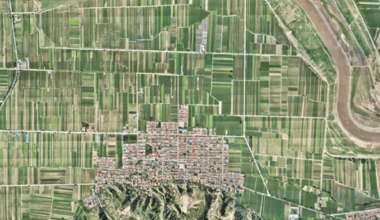No products in the cart.
Clean and renewable energy, harnessed from sources like sunlight, wind, and water, stands as the sustainable solution to reducing our reliance on fossil fuels and mitigating the environmental impact of traditional energy sources. Solar panels paved their way from niche technology to mainstream energy solutions, revolutionizing the power landscape by providing clean, sustainable, and cost-effective electricity for homes and businesses alike.
Solar panels, despite their long-term benefits, also require periodic maintenance and inspection to ensure optimal performance and longevity. Regular maintenance and inspection can identify issues early, preventing potential energy loss and ensuring the efficient operation of the solar panel system. Traditionally, solar panel inspection methods often involve manual, time-consuming processes that are less cost-effective and may not detect issues as efficiently as modern drone-based inspections.

The Challenges of Solar Panel Inspection
Solar panel maintenance and inspection are crucial to ensure the optimal performance and longevity of photovoltaic systems. Several common issues and challenges often arise in this field. Dust and dirt accumulation on the surface of solar panels can reduce their efficiency by blocking sunlight, while bird droppings and debris can cause damage. Microcracks in solar cells or interconnections can lead to energy loss and require early detection. Potential shading issues from nearby objects or vegetation can negatively affect the system’s energy production. Inconsistent panel temperatures due to faults or malfunctioning cells can impact overall performance.
Additionally, extreme weather conditions, such as hail, snow, and storms, may cause physical damage, which needs timely repair. To address these issues effectively, routine inspection and maintenance are essential to maximize energy output and the return on investment from solar panels. This is where drone technology comes in, revolutionizing solar panel inspections by providing a bird’s-eye view, swift identification of issues, and data-driven insights that enhance maintenance strategies and extend the life of photovoltaic systems.
Advantages of Drone-Based Inspection
The utilization of drones for inspection purposes offers a multitude of advantages in various industries, including the inspection of solar panels.
Improved Safety
Traditional manual inspections often require technicians to climb rooftops or navigate challenging terrain, which can pose risks to their well-being. Drones, on the other hand, can access hard-to-reach areas and perform thorough inspections without endangering human lives. This enhances workplace safety and reduces the likelihood of accidents or injuries during the inspection process.
Cost-Efficiency
Another advantage of drone-based inspection is cost-efficiency. Traditional methods often involve labor-intensive processes that can be time-consuming and costly. Drones can complete inspections quickly and accurately, reducing labor costs and the time required to conduct surveys. The data collected by drones is also highly precise, minimizing the chances of overlooking critical issues. Additionally, the cost savings extend to preventive maintenance as well, as identifying potential problems early on can prevent more expensive repairs or energy loss down the line.
High-Quality Data
Drones have become invaluable tools for solar panel inspection due to their ability to capture high-quality data. Equipped with advanced cameras and sensors, drones provide incredibly detailed imagery, enabling inspectors to identify microcracks, dirt, shading issues, or other defects with exceptional precision.
The high-resolution data collected by drones not only helps detect existing problems but also serves as a reference point for tracking changes in the condition of solar panels over time. Infrared drone recordings quickly reveal thermal irregularities or variations in solar modules, acting as an initial signal for potential issues.
This quality data not only enhances the accuracy of inspections but also facilitates the development of more effective maintenance strategies, ensuring that photovoltaic systems operate optimally and generate maximum energy output.
Accessibility to Hard-to-Reach Area
One of the significant advantages of using drones for solar panel inspection is their unparalleled accessibility to hard-to-reach areas. Solar arrays are often installed in remote or elevated locations that can be challenging for human inspectors to access safely.
Drones can effortlessly navigate these difficult terrains, whether it’s inspecting panels on the rooftops of commercial buildings or arrays in sprawling solar farms. Their ability to reach such locations not only enhances the thoroughness of inspections but also reduces the need for costly equipment like scaffolding or lifts.
Drone Solution for Maintenance and Repair Strategies
Maintenance and repair strategies facilitated by drones in the realm of solar panel inspection are transforming the way we care for photovoltaic systems. Drones armed with high-resolution thermal cameras can detect hotspots, potential microcracks, or defective cells with remarkable precision, allowing maintenance teams to identify and address issues before they become critical.
This proactive approach minimizes energy loss and extends the life of solar panels. Additionally, drones play a crucial role in reducing downtime during maintenance operations. Technicians can swiftly identify problems and plan targeted interventions, ensuring minimal disruption to energy production.
The data collected by drones during routine inspections also serves as a historical record, helping monitor the long-term health of the solar array and plan maintenance schedules effectively. As a result, maintenance and repair strategies driven by drone technology not only enhance the efficiency of solar panel systems but also lead to considerable cost savings and improved sustainability.
Conclusion
In summary, the adoption of drone technology has brought about a significant transformation in the realm of solar panel inspections. By harnessing the capabilities of drones, we are not only enhancing the efficiency of these inspections but also reaping a host of associated benefits. The safety aspect cannot be emphasized enough, as drones eliminate the need for human inspectors to navigate challenging and sometimes perilous terrain. This not only reduces the risk of accidents but also ensures that inspections can be conducted in areas that might have been otherwise inaccessible. The result is a safer working environment and improved overall operational efficiency.
In essence, the incorporation of drone technology in solar panel inspections is not merely a change in methodology; it represents a revolution in safety, efficiency, and long-term cost savings.



